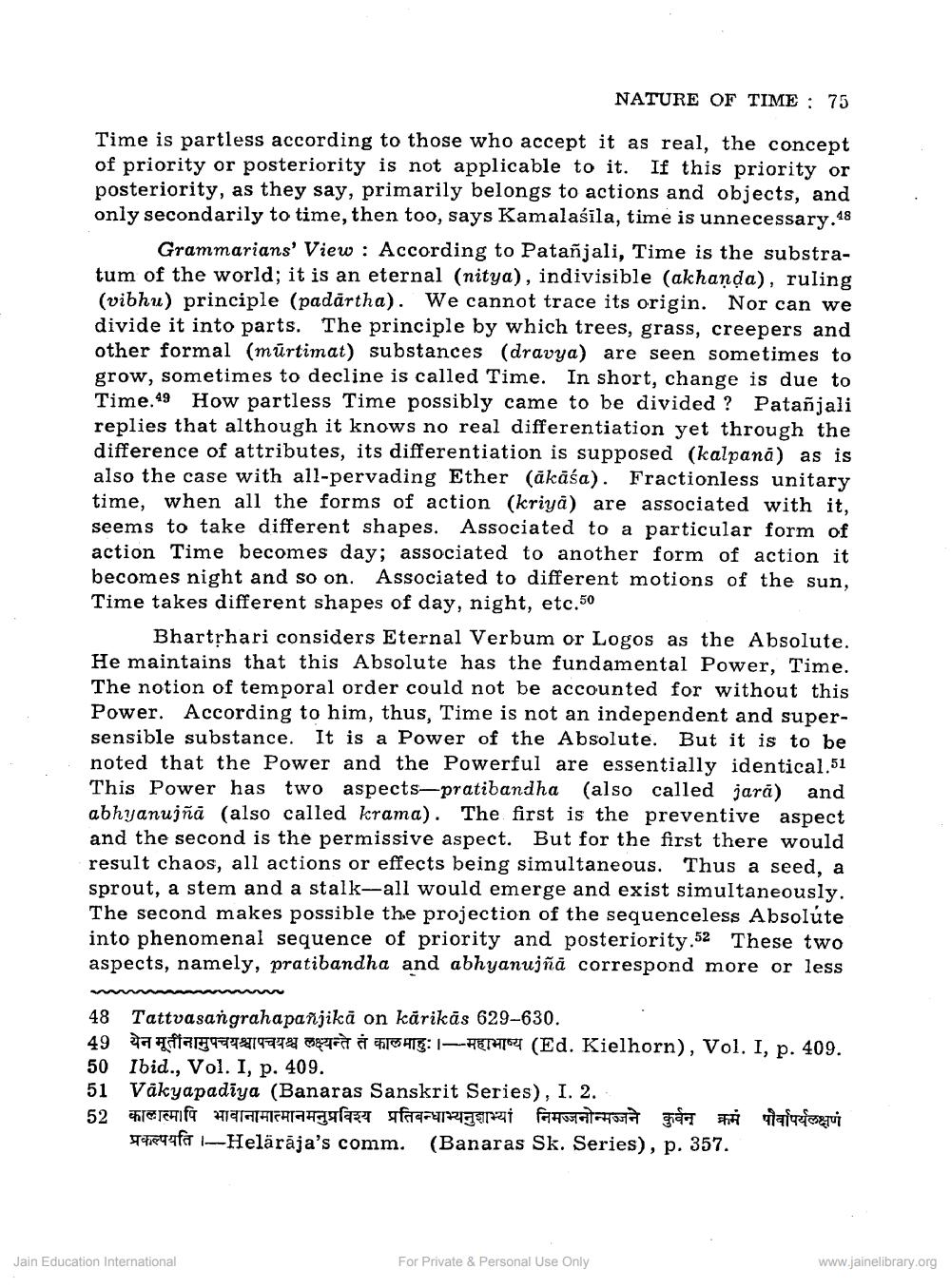________________
NATURE OF TIME : 75
Time is partless according to those who accept it as real, the concept of priority or posteriority is not applicable to it. If this priority or posteriority, as they say, primarily belongs to actions and objects, and only secondarily to time, then too, says Kamalasila, time is unnecessary.48
Grammarians' View : According to Patañjali, Time is the substratum of the world; it is an eternal (nitya), indivisible (akhanda), ruling (vibhu) principle (padārtha). We cannot trace its origin. Nor can we divide it into parts. The principle by which trees, grass, creepers and other formal (mūrtimat) substances (dravya) are seen sometimes to grow, sometimes to decline is called Time. In short, change is due to Time.49 How partless Time possibly came to be divided ? Patañjali replies that although it knows no real differentiation yet through the difference of attributes, its differentiation is supposed (kalpana) as is also the case with all-pervading Ether (ākāśa). Fractionless unitary time, when all the forms of action (kriya) are associated with it, seems to take different shapes. Associated to a particular form of action Time becomes day; associated to another form of action it becomes night and so on. Associated to different motions of the sun, Time takes different shapes of day, night, etc.50
Bhartrhari considers Eternal Verbum or Logos as the Absolute. He maintains that this Absolute has the fundamental Power, Time. The notion of temporal order could not be accounted for without this Power. According to him, thus, Time is not an independent and supersensible substance. It is a Power of the Absolute. But it is to be noted that the Power and the Powerful are essentially identical.51 This Power has two aspects-pratibandha (also called jara) and abhyanujñā (also called krama). The first is the preventive aspect and the second is the permissive aspect. But for the first there would result chaos, all actions or effects being simultaneous. Thus a seed, a sprout, a stem and a stalk--all would emerge and exist simultaneously. The second makes possible the projection of the sequenceless Absolute into phenomenal sequence of priority and posteriority.52 These two aspects, namely, pratibandha and abhyanujña correspond more or less
48 Tattvasangrahapanjikā on kärikās 629-630. 49 da CE70197724 7 14: 1-RENTE (Ed. Kielhorn), Vol. I, p. 409. 50 Ibid., Vol. I, p. 409. 51 Väkyapadiya (Banaras Sanskrit Series), I. 2. 52 कालास्मापि भावानामात्मानमनुप्रविश्य प्रतिबन्धाभ्यनुशाभ्यां निमज्जनोन्मजने कुर्वन क्रमं पौर्वापर्यलक्षणं
af Helärāja's comm. (Banaras Sk. Series), p. 357.
Jain Education International
For Private & Personal Use Only
www.jainelibrary.org




